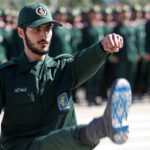
Tens of thousands of South Koreans demonstrate Aug. 13, during the first round of military drills Aug. 8-14. This “military drill” was described as preparation for a larger 11-day U.S.-South Korean military operation Aug. 22 to Sept. 1. Photo: Xinhua.





